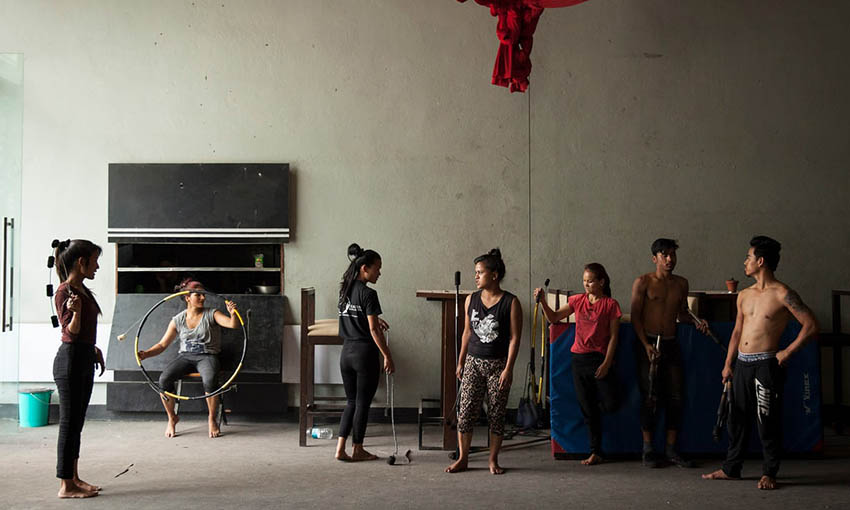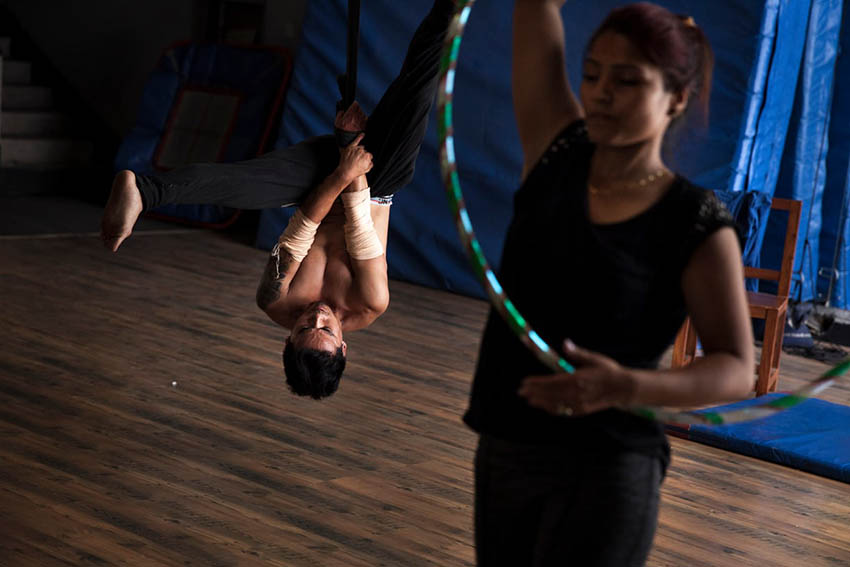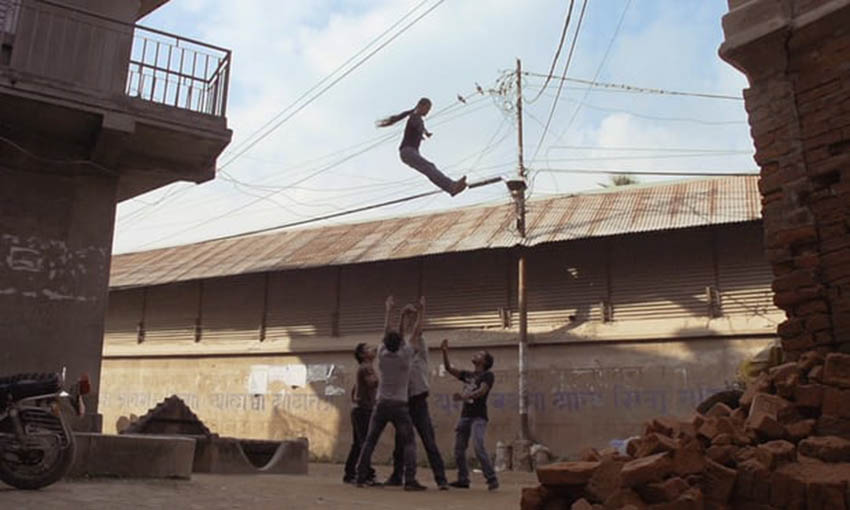Trafficking Survivors Showcase Their Skills In Nepal
Kidnapped and forced to become child circus performers
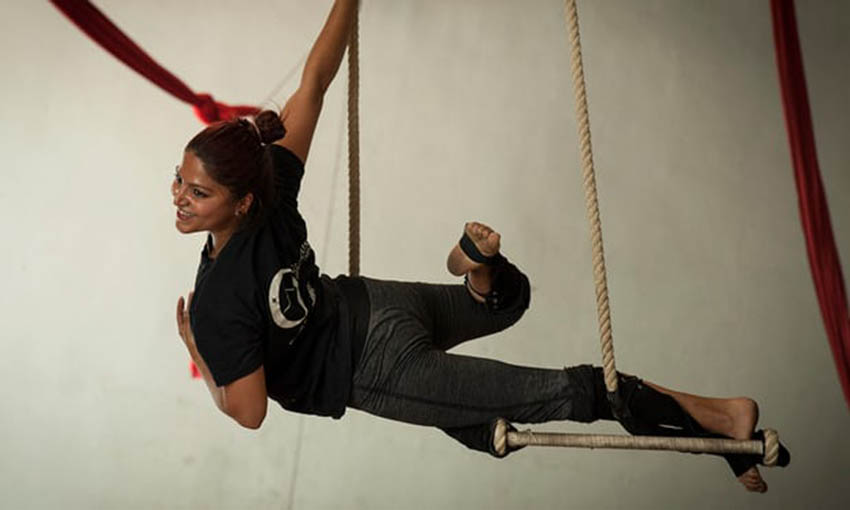
Photo Credit : Kishor Sharma for the Guardian
‘Breathtaking skills’: Saraswati, a Circus Kathmandu performer, demonstrates her skills.
In a dusty gymnasium south of Kathmandu, a group of twentysomething Nepalis are rehearsing a new routine. One girl sways back and forth on a trapeze suspended from the metal rafters, twisting and turning as two boys play-fight below her. Miming a struggle, one boy ducks as the other tries to grab; one jumps as the other lunges. As the boy shirks off his would-be assailant, he comes close to being hauled offstage, or “kidnapped”, in performance-speak. But the kidnapper manages to grab just the boy’s T-shirt, and tears it from him before running away.
Kidnappings, trafficking and fending off villains are key themes for Circus Kathmandu, a troupe founded by and comprised of trafficking survivors. Smuggled as children into neighbouring India and sold into the travelling circus industry, they have since turned their unique skillset into an educational art form as Nepal’s first – and only – circus.
Hindi pop songs churn out of a beat-up boombox in the gym corner as Saraswati, 28, who was sold by a neighbour to a circus in northern India, gracefully practices her aerial trapeze in a T-shirt and leopard-print leggings. Sheetal, 25, who has no memories of life before the Indian circus, climbs tall silk ropes with just thin floor mats beneath her to shield a potential fall.
Circus Kathmandu’s performances relay performers’ own experiences as precautionary tales for both children and parents. The 2015 earthquake heralded a sharp increase in already high trafficking statistics, and the 1,400km-long border stretching between India and Nepal – which has only 14 checkpoints – means men, women and children can disappear quickly, sometimes never to be seen again. Anti-trafficking groups estimate that about 54 young women and girls are trafficked from Nepal to India every day.
Some of the performers have no memory of life before they were trafficked, and do not even know where they originally came from.
Almond-eyed Saraswati remembers the day a neighbour from her rural village approached her, offering to feed and school her. “I had four sisters and two brothers. We lived in a remote part of Nepal, and it wasn’t easy to go to school,” explains Saraswati, who was aged nine at the time. “Some girls in my village were getting married before they’d even had their first period, so when this neighbour said he would take care of me, I didn’t even go home to tell my parents.”
The man smuggled Saraswati and his own daughter over the border, sold them both to a circus near the border (Saraswati is still unsure of the exact location), then left. While the man’s daughter buckled under the trauma of being abandoned by her own father, Saraswati soon realised that she needed to thrive in her new environment, even if it was heartbreaking to be away from home.
“For the first few days, everything was new and I liked it, I was so happy,” she says. “All I could see were these beautiful girls in dresses and makeup, doing the splits. I asked them, ‘Are you dolls?’” She breaks into Nepali as the memory hits. “I dressed up, put on the sparkly outfits and the makeup and then, when the training began, I would just cry and cry for home.”
Anti-trafficking groups estimate that 54 young women and girls are trafficked out of Nepal every day.
Daily life in the circus was gruelling. Workouts lasted until the early morning, to ensure limbs were as flexible as possible. The circus owners aimed their severe (and regular) beatings at the childrens’ hips and buttocks, so that the bruises couldn’t be seen by circus-goers. By the age of 14, Saraswati – the star of the circus – had been married off to the circus owner’s son; within 12 months, she had given birth to twin sons. Two years later, aged 17, she gave birth to a third son. By 20, she was a widow.
Every other performer in the circus was, like her, a trafficked child – except that the parents who had sold their own children would visit every couple of years to collect payment from the circus owners before leaving again. But no one ever came for Saraswati, because no one knew where she was. When the circus was finally raided by a Nepali NGO operating on a tipoff, Saraswati was returned to her family for the first time in 14 years. She successfully sought justice against the neighbour who sold her into slavery, who is now serving a 10-year prison sentence.
Despite this seeming victory, Saraswati struggled in her new life back home. “This was not a happy reunion,” says British circus artist Sky Neal, who worked with the organisation leading the circus raids and was present when Saraswati was finally freed. “This amazing, bewildered young woman was catapulted back to an alien life after 14 years in captivity. She was angry and scared and in the midst of shattered relationships.”
Sheetal’s story is equally harrowing. Her first real memory, she says, is of watching her mother drown in front of her. Soon after, she was taken away by her grandmother to what she thinks was the circus. When she was finally rescued, she did not know her real age, name, birth date or caste.
“It says on my passport that I’m 25 and Nepali, but I don’t know when or where I was born,” says Sheetal quietly. “I may actually be Indian. I don’t know.”
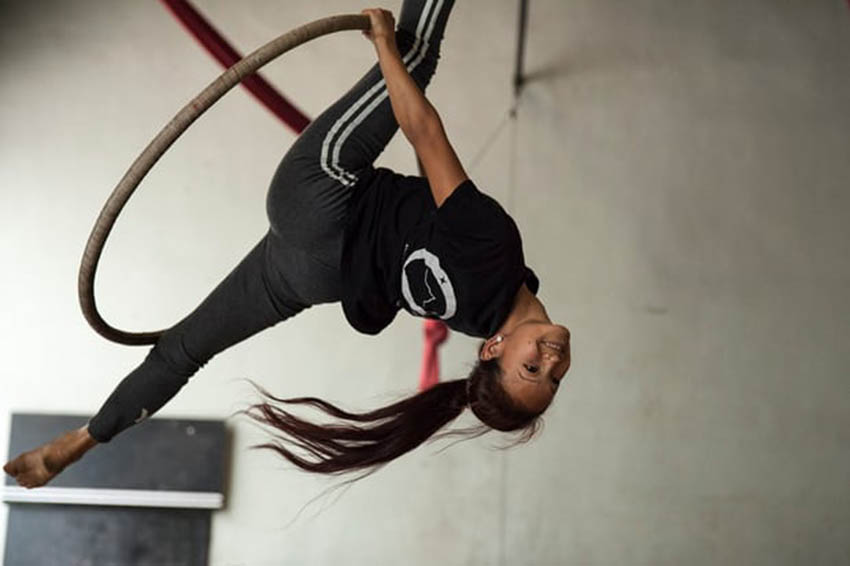 Flying high: a performer from the Kathmandu circus.
Flying high: a performer from the Kathmandu circus.
At the refuge where Saraswati, Sheetal and other rescued circus children were undergoing rehabilitation, Neal gently encouraged them to keep performing, only to discover that they were too embarrassed to do so.
“It was horrifying to learn that something I loved so dearly – that the world is so enchanted by – could have such a dark side,” Neal says. “These young girls, many more skilled than some of my colleagues, were ashamed of their skills, and were deeply stigmatised, often rejected by their families and communities. But inadvertently these young women were left with a secret weapon: their breathtaking skills as circus artists.”
Neal, along with co-director Kate McLarnon, began filming the girls’ re-entry into everyday Nepali life, capturing their transition from trafficking survivors to performers and educators. The resulting documentary, Even When I Fall, which hits UK cinemas in April, will be used as an education tool in areas of Nepal vulnerable to trafficking, as part of advocacy and awareness workshops.
Saraswati was sold by a neighbour, who took her from her rural home and sold her to a circus in India. When she was rescued she told officials what he did and he is now serving 10 years in prison. Photo Credit : Sky Neal & Kate McLarnon | Even When I Fall
For Saraswati and Sheetal, who run the circus together and have since taken in a handful of new recruits that includes street children, the film’s release comes at a time of greater self-acceptance and self-awareness.
“I’ve often complained to my mother that she named me after the goddess of wisdom and knowledge, but I stopped school when I went to the circus,” muses Saraswati. “People look down on me because I come from the circus, but it’s not something to be ashamed of, it’s a talent to be a performer and the circus is entertainment. People here are slowly starting to realise that.”
She pauses, smiling. “I think now I do have my own wisdom to share.”
Photo Credit : Kishor Sharma for the Guardian
This article originally appeared on : The Guardian
-
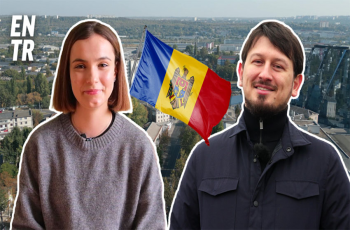
Moldovan youth is more than ready to join the EU
2024-04-18 -

UN says solutions exist to rapidly ease debt burden of poor nations
2024-04-18 -
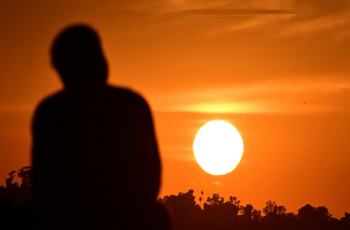
'Human-induced' climate change behind deadly Sahel heatwave: study
2024-04-18 -

Climate impacts set to cut 2050 global GDP by nearly a fifth
2024-04-18 -

US sterilizations spiked after national right to abortion overturned: study
2024-04-13 -
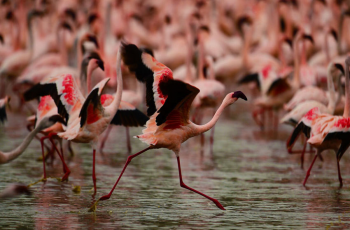
Future of Africa's flamingos threatened by rising lakes: study
2024-04-13 -

Corporate climate pledge weakened by carbon offsets move
2024-04-11 -

Humanity lost 'moral compass' on Gaza: top UN official
2024-04-10 -

No.1 Scheffler says patience and trust are secrets to success
2024-04-10 -

From homeless addict to city chief: the unusual journey of Canadian mayor
2024-04-10

